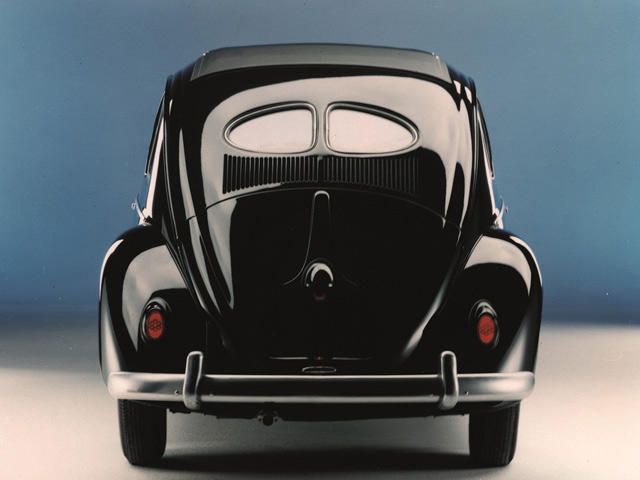Nobody debates who invented the Ford Model T; no one claims being the MINI's designer and no one takes away from Zora Arkus-Duntov the glory of pioneering the Chevrolet Corvette. However for the Volkswagen Beetle, the most popular car ever, it's a different story. Although most historians and car fans subscribe to the notion that Professor Ferdinand Porsche is the Beetle's inventor, every now and then a new figure emerges from the shadows of auto industry history, trying to break its way to fame by claiming to be the rightful creator.
The latest one comes in a book titled "The Extraordinary Life of Josef Ganz: The Jewish Engineer Behind Hitler's Volkswagen" by Paul Schilperoord. The book was published in Europe a few years ago, though only from the end of last year was it available in English. So why are so many interested in the Beetle but nobody cares about it quite the same way as, let's say, the Model T? The Beetle, as opposed to the Model T, was both a work of a genius and a product of sin. Henry Ford was a well-known tinkerer; by and large he never pioneered automotive technologies.
His greatest contribution to the auto industry was on the industrial side, a result of his belief that mass car production was the key to riches. And he became a very wealthy individual, far beyond the dreams of most modern high-tech entrepreneurs. The Model T wasn't a great car, but it was a great money maker. Unlike Ford, Porsche was interested more in automotive technology than in production and sales figures. He designed the first hybrid car, racing cars, passenger cars, tanks, and even an electric tank. He was also a Nazi collaborator and one of Hitler's most trusted guys (though, as far as we know, not in the political sense).
There is no doubt that Porsche derived a lot of knowledge from people who worked with him at various companies and in his design office. However, translating those ideas into a car is another dimension. Porsche's ideas for the Beetle's design were influenced by Czech-built Tatra cars and their designer, Hans Ledwinka. The 1931 Tatra V570 was a small car with a rear mounted two-cylinder air-cooled boxer engine. It's design was characterized by small and aerodynamically shaped iterations. Hitler, who became Porsche's unofficial sponsor, even hinted to him that the Tatra was his preferred peoples' car.
And Hitler also became friendly with Ledwinka, who after the war was sentenced to five years in jail after he was accused of collaboration with the Nazis (Porsche was held in prison by the French for two years). However, there were probably other influences among them. One of those might have been from a German-Hungarian Jewish mechanical engineer and designer named Joseph Ganz. He was also the editor of Motor-Kritic, a widely read magazine that criticized the German auto industry for its conservative approach to car design.
As a student, Ganz began to conceive of a car for the general population, which was lightweight, had independent wheel suspension, a mid-mounted engine, and an aerodynamic shape. At Motor-Kritic, he was also highly critical of current auto engineering because cars were heavy, unsafe, and had primitive, old-fashioned designs. Porsche, by then a 30 year veteran of automotive design, was probably on the receiving end of Ganz's criticism. However, Porsche was a prolific designer who was already engaged in projects for the production of small cars, first with motorcycle manufacturer Zundapp and then with NSU, who built cars and motorcycles.
Both of those projects didn't come to fruition, though when Hitler offered Porsche his support for the development of the peoples' car, Porsche already had the concept in place. And even then the development process took five years to complete, and since none of the German car manufacturers at the time wanted to be involved with the project, Porsche was also tasked with the burden of building the plant at Wolfsburg under the supervision of the Third Reich. Ganz later fled Germany to Switzerland in 1934 after he was arrested and eventually freed by the Gestapo.
The charges, of course, were based on falsified information of blackmailing the automotive industry from his editorial post and as a consultant to BMW and Daimler-Benz. He finally settled in Australia where he worked for General Motors Holden division and died in 1967. The final word on the subject might emerge when car historian Karl Ludvigsen publishes his second book on Porsche's designs. The first book, "Ferdinand Porsche Genesis of a Genius", depicted Porsche's designs from 1900 to 1933. The next one will deal with Porsche's civil as well as military vehicle design during the Nazi regime.
This was a bleak period in world history, perhaps the bleakest of modern times. The new book should be a fascinating read and the riddle of who created the Beetle might finally be solved.


